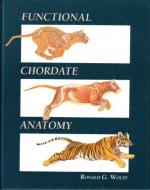|
This section contains 273 words (approx. 1 page at 300 words per page) |
Chordates are animals in the phylum Chordata. At some stage of their development, all chordates have the following characters: a notochord, gill slits, a dorsal hollow nerve cord, and a post-anal tail. There are three sub-phyla of chordates: the Cephalochordata, Tunicata, and Vertebrata. The cephalochordates and tunicates are referred to as "invertebrate chordates," to distinguish them from the more complex, later evolved vertebrates.
The Cephalochordata consists of several groups of shallow-water marine organisms, including about 23 species of amphioxus and lancelets. These animals are tapered to a point a both ends, are filter-feeders, and can be as long as 2.8 in (70 mm). Although they are essentially invertebrates in their structure and function, these animals have a simple notochord and other characters of the chordates.
The Tunicata consists of about 1,250 species of marine organisms, including such familiar ones as sea-grapes and sea-peaches. Tunicates are filter-feeders, may be sessile or free-swimming, colonial or solitary, have a U-shaped gut, and are typically hermaphroditic (i.e., both sexes are represented in the same individual). The larval stage has a notochord and other characters of the chordates.
The Vertebrata consists of about 42,000 living species of fish, amphibians, reptiles, birds, and mammals. Vertebrates have a brain-case, vertebral column, lateral limbs, a skeleton of bone and/or cartilage, skin composed of surface epidermal and subs urface dermal layers, a heart and blood cells, a neural crest during embryonic development, and internal organs such as kidney, pancreas, and liver. The more complex (or more "highly evolved") vertebrates also have jaws, teeth, paired fins or limbs with an internal skeleton articulated to a limb girdle, lungs, and bony scales, feathers, or fur.
|
This section contains 273 words (approx. 1 page at 300 words per page) |


